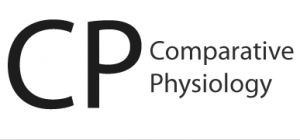Comparative Physiology @ Guelph
Mycoplasma detection by culture
Detection of mycoplasma by culture is the reference method of detection and has a theoretical level of detection of 1 colony-forming unit (cfu). However, there are some strains of mycoplasma that are non-cultivable (certain strains of Mycoplasma hyorhinis) and need DNA-based methods to be detected. The current method is suitable for the detection of mycoplasma in both cell cultures and cell culture reagents and results are obtained within 4 weeks. Mycoplasma colonies observed on agar plates have a ‘fried egg’ appearance (see figure 1).
Materials
- 70% (v/v) isopropanol in sterile water
- Mycoplasma plates (in 5cm petri dishes)
- Mycoplasma horse serum broths (in 1.8ml aliquots)
- M. orale (ATCC #23714, from $185.00)
- M. pneumoniae (ATCC #15531, from $185.00)
Equipment
- Personal protective equipment (gloves, laboratory coat, safety visor)
- Water bath set to 37°C
- Microbiological safety cabinet at containment level II
- Incubator set at 37°C
- Anaerobic jar system
Sample Preparation
- Cells should be cultured in antibiotic-free media for at least three passages prior to the preparation of the test sample.
- Prepare cell suspension at 1 to 2×106 cells/mL.
- Induce cell lysis either by sonication or using Triton x100 (see p. 33).
- Samples can be stored at ≤ – 60°C.
- Inoculate 2 agar plates with 0.1 ml of test sample.
- Inoculate an agar plate with 100 cfu of each control organism (M. orale and M. pneumonia).
- Leave 1 agar plate un-inoculated as a negative control.
- Inoculate 1 broth with 0.2 ml of test sample.
- Inoculate a broth with 100 cfu of each control organism.
- Leave 1 broth un-inoculated as a negative control.
- Incubate agar plates anaerobically for 14 days at 37°C.
- Incubate broths aerobically for 14 days at 37°C.
- Between days 3 – 7 and 10 – 14 of incubation, subculture 0.1 ml of test broth onto an agar plate and incubate plate anaerobically as above.
- Observe agar plates after 14 days incubation at x400 magnification for the presence of mycoplasma colonies (see Figure 1).
Results
Criteria for a Valid Result:
- All positive control agar plates and broths show evidence of mycoplasma by typical colony formation on agar plates and usually a colour change in broths.
- All negative control agar plates and broths show no evidence of mycoplasma.
Criteria for a Positive Result
- Test agar plates infected with mycoplasma show typical colony formation.
Criteria for a Negative Result
- The test agar plates show no evidence of mycoplasma.
Notes
- Mycoplasma colonies have a typical colony formation commonly described as “fried egg” due to the opaque granular central zone of growth penetrating the agar surrounded by a flat translucent peripheral zone on the surface.
- Mycoplasma pneumoniae is a potential pathogen and must be handled in a class 2 microbiological safety cabinet operating to ACDP Category 2 Conditions.
- This test procedure should be carried out in a microbiology laboratory away from the cell culture laboratory.
- It is recommended that samples be tested for mycoplasma using at least two detection methods (e.g. indirect DNA stain and culture isolation) for a more reliable result. This is due to the varying detection sensitivities of the methods for different species of mycoplasma.
